
Hypoxic and anoxic regions in the Baltic Sea, 2011
The content of this webpage is part of the Marine Science Report No 100 2016 and should be cited as:
Susanne Feistel, Rainer Feistel, Dietwart Nehring, Wolfgang Matthäus, Günther Nausch, Michael Naumann: Hypoxic and anoxic regions in the Baltic Sea, 1969 - 2015. Meereswiss. Ber., Warnemünde, 100 (2016) doi: 10.12754/msr-2016-0100
All version information and information on further technical development are available via the website https://www.io-warnemuende.de/msr-2016-0100.html

This work is licensed under a Creative Commons Attribution-NonCommercial 4.0 International License.
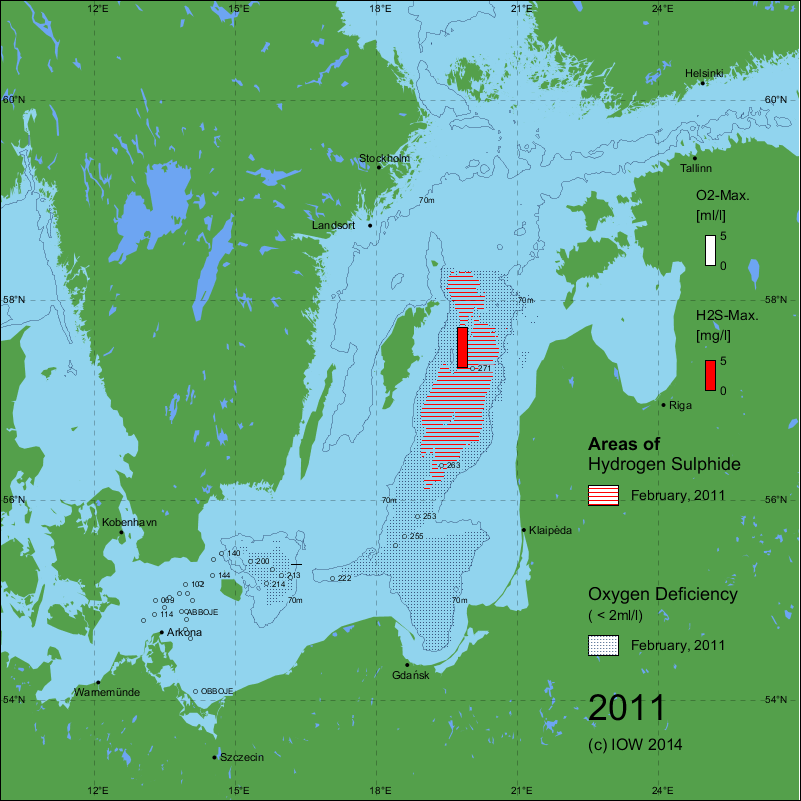
Jan/Feb, 2011: download SVG (computed 2016)
|
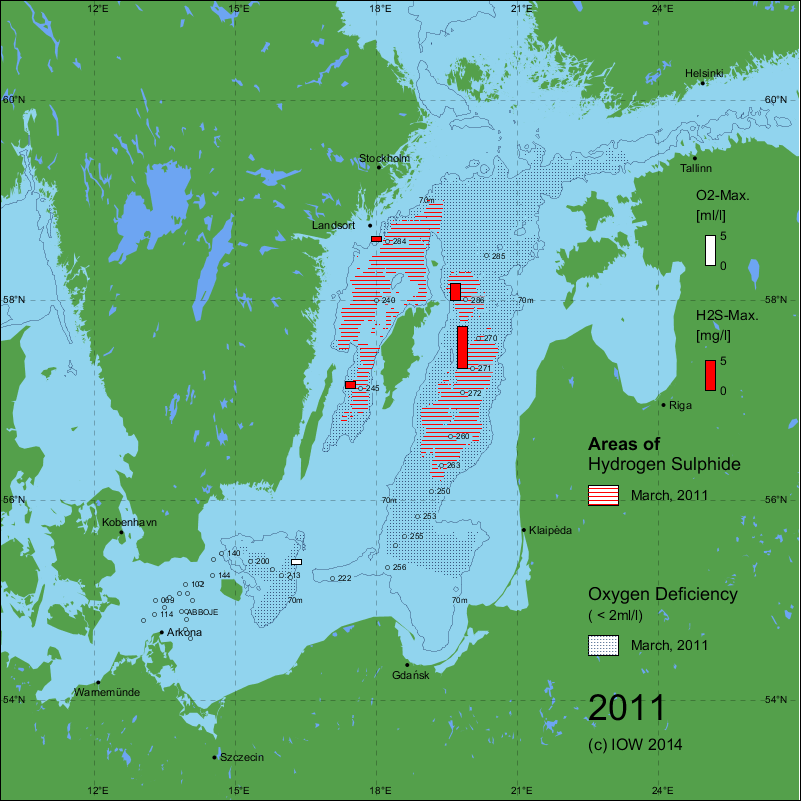
Mar/Apr, 2011: download SVG (computed 2016)
|
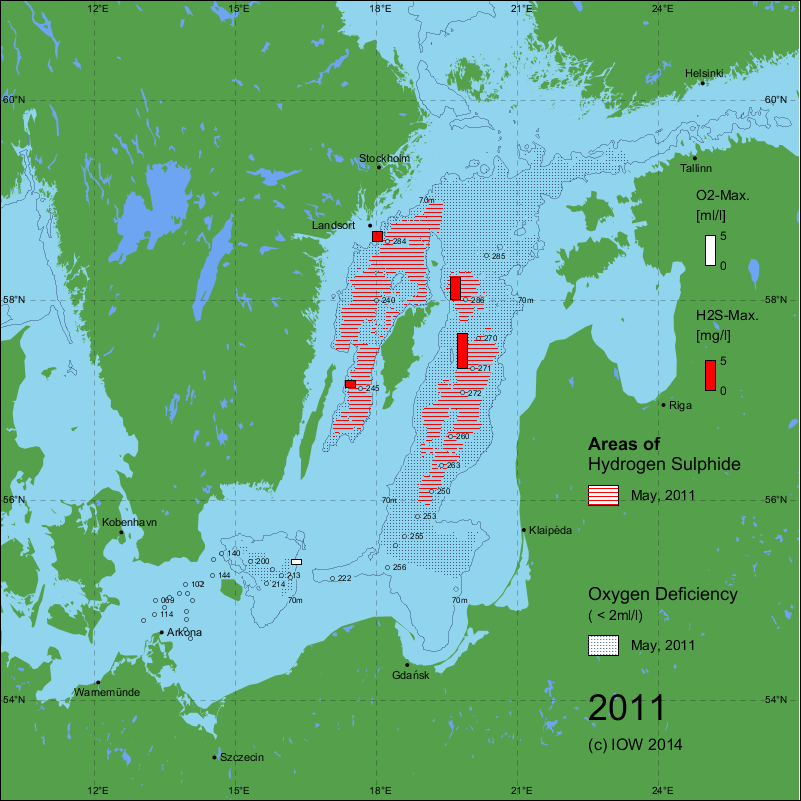
Apr/May, 2011: download SVG (computed 2016)
|
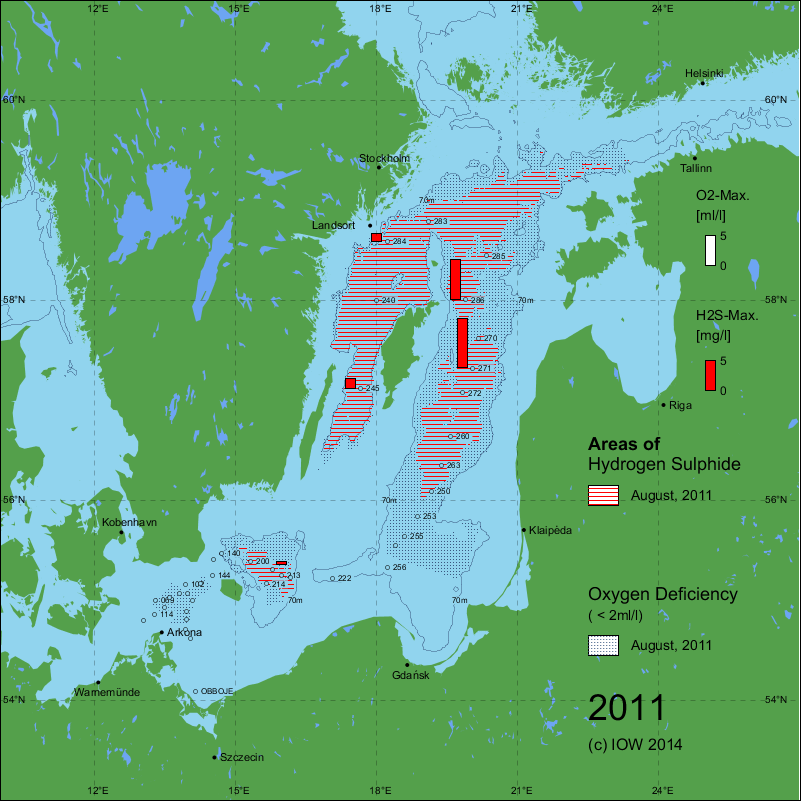
Jul/Aug, 2011: download SVG (computed 2016)
|
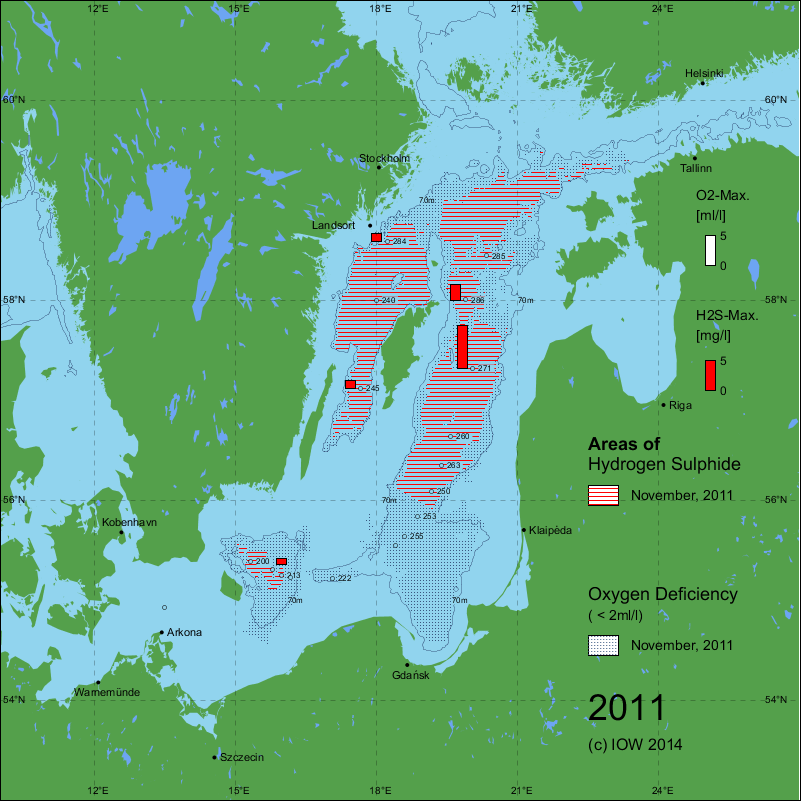
Oct/Nov, 2011: download SVG (computed 2016)
|
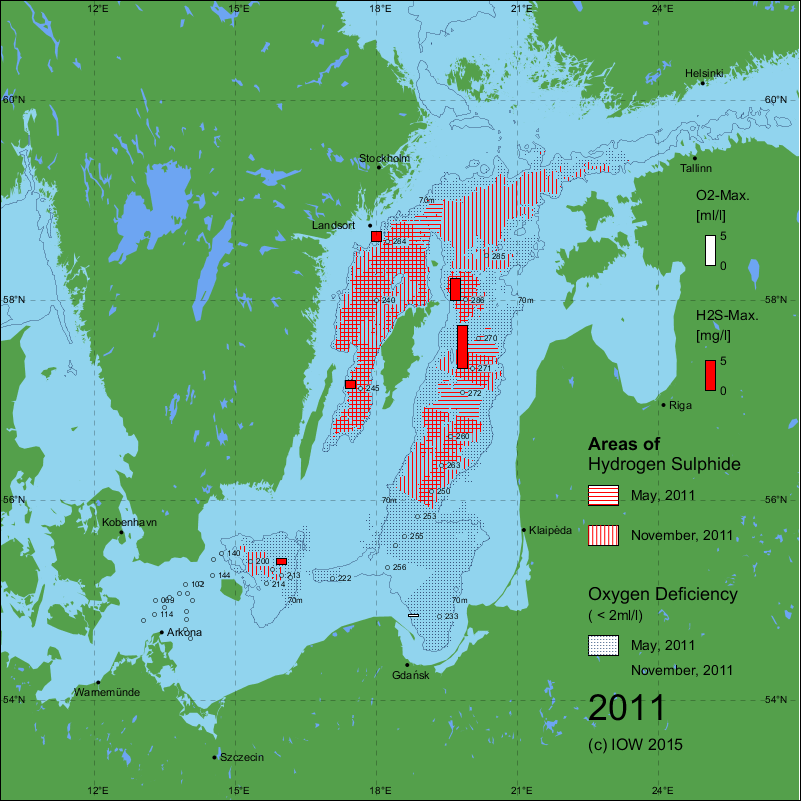
Apr/May & Oct/Nov, 2011: download SVG (computed 2016)
|
| In the deep water of the Bornholm Basin, baroclinic inflows were recorded repeatedly during the last years which influenced the oxygen situation positively with oxic conditions throughout 2011. In the deep water of the eastern Gotland Basin, temperature and salinity decreased further and showed extremely low standard deviations illustrating the exceptional low inflow activity. The H2S containing layer has a thickness of around 100 m with a mean H2S content of -3.98 ml/l at 200 m water depth (NAUSCH et al., 2012). | |
References:
- NAUSCH, G., FEISTEL, R., UMLAUF, L., MOHRHOLZ, V., NAGEL, K., SIEGEL, H., 2012: Hydrographisch-hydrochemische Zustandseinschätzung der Ostsee 2011. – Meereswiss. Ber., Warnemünde, 86, 1-121, doi: 10.12754/msr-2012-0086